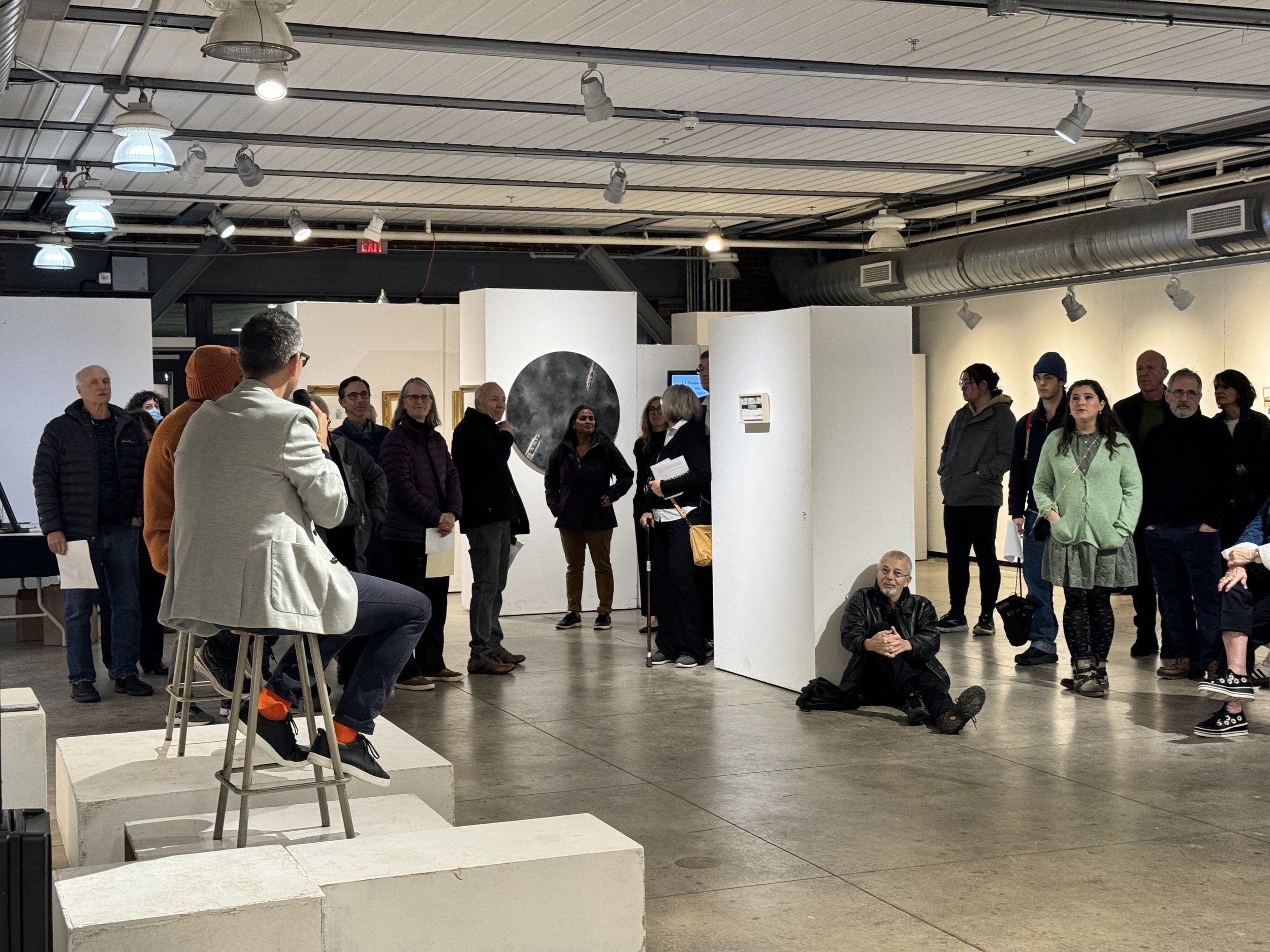‘Contained’, 2024
Halifax, Canada














“‘Contained’ takes us through a critical and provocative view on our desires and means to achieve them. A crucial and compelling body of work produced in the same year where global investments are recording the highest number of fleets and containers in production.”
Curatorial Statement
by Shuvanjan Karmaker
Water is essential for organic matter to thrive in our ecosystem. We are mostly made of water, much like the world we live in. Cities, nations, continents connected by water. It has driven human discovery and connection for thousands of years, connecting people and lands, thousands of miles away. Globally, indigenous communities have responsibly taken advantage of such privilege over thousands of years, using it to discover new territories, harvest food and energy.
How does something like water, so essential and abundant, for much of human history, start to experience the laws of scarcity? The same indigenous communities who have had access to clean drinking water for most of their history are suddenly left with no access to clean drinking water.
The answer lies in policies developed to boost economic activities without considering their environmental impact while relying heavily on carbon based technologies. Christopher Webb’s new body of work, Contained, takes a microscopic view on our economic activities and policies through the journey of the world’s most expensive box, the twenty-foot equivalent unit (TEU) or, most commonly known as the shipping container.
Through this series of photo realistic paintings Christopher offers us an opportunity to look critically at supply-chain disruptions, shift in consumer behaviours and a glimpse into the future.
Most of us are familiar with news of political conflicts affecting the arrival of ships at ports and its direct connection to inflation. Another key reason for ships being rerouted, a less discussed one, is dropping water levels, effects of which are multiplied by global systems depending on long shipping routes.
Canals experiencing heavy traffic have been recording a loss in water levels. The Panama Canal faces the challenge of maintaining sufficient water levels to accommodate its lock-based system as freshwater resources in the surrounding regions become scarcer due to changing precipitation patterns.
Rising temperatures lead to evaporation, reducing the volume of water available to maintain adequate depth for vessels. In the Suez Canal, situated in a region prone to water scarcity, the impacts are particularly stark.
Rerouting around Africa costs $400,000 USD in emissions for one single ship.
Current trading structure assigns 90% of our goods to be moved by container ships. Supply chain disruptions including shortage in labour caused by 2020 health and safety restrictions contributed to inflating prices. At the same time, demand for goods surged as people turned to online shopping.
With demand for goods rising, shipping companies found it in their best interest to raise freight prices which led to a profitable practice of sending empty containers overseas as soon as possible –– weighing on farmers looking to sell their produce before they went bad. And, naturally, this led to shortage in food supply –– leading to increasing food insecurity in urban, rural and remote areas. Another consideration is the congestion at ports causing degradation of essential goods leading to rise in prices. A bottleneck experienced by a surge in demand.
Before Malcolm McLean’s standardization of shipping containers it was largely an expensive endeavour. Standardization of the twenty-foot equivalent unit containers allowed the fast expansion of global trade. In recent history, shipping has been a relatively low-margin industry with the exception of the past five years. However, the environmental cost has always been significant.
Buyers for containers are either ocean carriers or leasing companies, owning 52% and 48% respectively. Ocean carriers can also lease containers. Most know the names of ocean carriers like A.P. Moller-Maersk Group, Happag-Lloyd, CMA CGM, Cosco, Maersk Line and MSC shipping. Nine major shipping companies formed three alliances to consolidate global shipping rates. While most of the world experienced record inflation, food and housing insecurity, these carriers recorded $190 billion in profits.
Small island nations rely heavily on maritime imports but their connectivity has declined by 9% on average over the past decade. While everyone in high-income countries are feeling the effects of rising prices, small-island economies are hit the hardest, in terms of rising price levels of goods and essential services.
Contained takes us through a critical and provocative view on our desires and means to achieve them. A crucial and compelling body of work produced in the same year where global investments are recording the highest number of fleets and containers in production.
Date: 22 November, 2024
Curator:
Shuvanjan Karmaker
Location: Dalhousie University School of Architecture
Catalogue Design:
Del Mare Design
